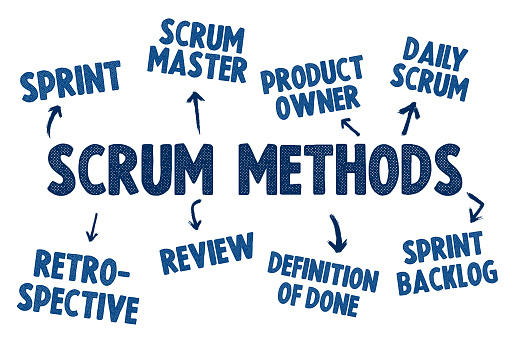If you work in tech (or spend how much time with the engineer), you may have heard of “Scrum” and “Agile.” This is the system mentioned in the honoring tone based on the type of technology and seems to have its own strange language. Terms such as “Poker Planning,” “stand-up,” and “sprint” were thrown by supporters.
Everything can intimidate a little for those who don’t know.
I know because I’ve been there. During the first week I worked in my technology company introduced to Scrum Master training through our software development team, and I was immediately hooked. The way they can take complex problems, prioritize them into individual tasks, then delegate the tasks to the most suitable team members to complete each extraordinary.
But is this only for engineers? Can we non-code-wizards really benefit from something like Scrum? If so, how do you start?
Buckle, because we will “run” through the intro to Scrum (you will get a joke at the end of this article, I promise).
What is Scrum and Agile?
Things can be a little confusing for newcomers in connection with nomenclature. “Scrum” and “Agile” seems to be used alternately when you first enter this world, but there are important differences.
Agile refers to a set of “methods and practices based on values and principles disclosed in the Agile Manifesto,” which includes things like collaboration, own organization, and team functionality.
Scrum is a framework used to apply agile development.
A good analogy is the difference between recipes and diets. The vegetarian diet is a set of methods and practices based on principles and values. Recipes for Chickpea Taco will be a framework that you can use to implement your vegetarian diet.
This is similar to the relationship between agile (diet) and scrum (the recipe you follow).
Agile was born to the technique used by innovative Japanese companies in the 70s and 80s (companies such as Toyota, Fuji and Honda). They start working through the Kanban method to increase the speed and flow of work.
In the mid 90’s, a man named Jeff Sutherland was frustrated by a company that was constantly disturbed by projects behind the schedule and more than the budget. He tried to find a better way.
His research took him to these Japanese companies and their agile methods. Based his work about this, Sutherland created a scrum framework. After a series of successes using his new method, Scrum began to spread rapidly throughout the world of product development.
Who can benefit from Scrum?
You can be forgiven for thinking Scrum is something limited to engineers or developers. But the framework can be useful for other types of projects too.
“Scrum can be used for all kinds of complex projects, the warning is that it works best when there are concrete products produced,” said David Matthew, a master certified master for the incentive technology group, “If you work in marketing and need to write a copy for A project, it can certainly be useful for your team. “
Scrum has been used by everyone from the FBI, to marketing institutions, to construction crews. Every time you produce a kind of product, whether it’s software or email campaign, Scrum can help you manage your team and complete more work in a shorter time.
People and scrum parts
To understand Scrum, you must know people and parts of the framework. The good news is, you don’t need special experience or certification to start.
“You don’t need a lot to start with Scrum,” Matthew said, “you really only need a place to set your mind, or your backlog. It can be software like Trello, or even just a blackboard. You need a different role , like the owner of the product and master scrum. The tool you actually need is not as big as the role involved. “
Also read: Why is Web Design & Development Necessary For The Business?
Let’s crush the parts and parts that make Scrum happen:
Scrum starts with the product owner. This is the person who represents the best interests of the end user, and has the authority to say what enters the final product.
The product owner is responsible for making backlogs, task lists and requirements for final product needs. The following is an important part: The backlog must be prioritized. That is the work of the product owner.
If I use Scrum to design a car, items like “must have a machine” will be near the top of my priority list, because the car can’t work without it. “Must painted red” will be lower on my priority list; Maybe it’s still important to me, but it’s not the requirement to run a car.
Next is Sprint. Sprint is a predetermined time frame where the team completes the task set from the backlog. The length of time depends on the team’s needs, but two weeks are quite typical.
The team met every day to provide advancement updates in the daily scrum. Many people also call “this daily stand-up.”
Each sprint ends with reviews, or retrospective, where the team reviews their work and discuss ways to increase the next sprint.
As you can see, there are no special equipment or training that you need to start. The hardest part is studying Lingo, and remains loyal to the rules and guidelines that make Scrum work.
Start the Scrum Basic Framework
If you are bored with your project management method at this time, why not give Scrum?
Because you don’t need special training to start, it’s really just a matter of learning your own rope. Sutherland and co-creador, Ken Schwaber, made this super easy by making an official guide available freely at scrumguides.org.
Learn the basics of starting it’s easy. Mastering this technique is a difficult part.
This is Scrum Master David Matthew again:
“Scrum is rather like poker; you can learn the rules in 10 minutes, but it takes a long time to be great at it.”




